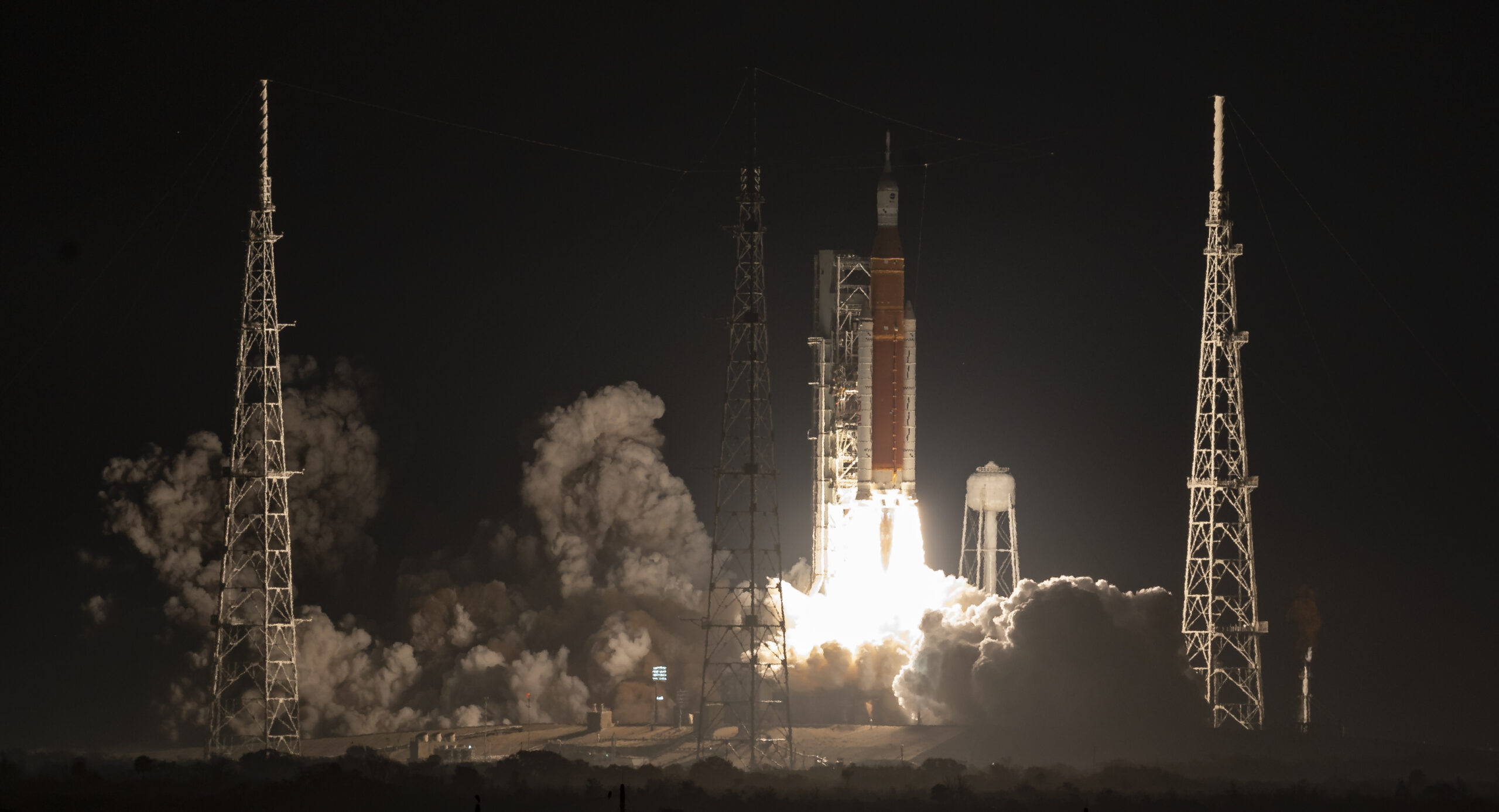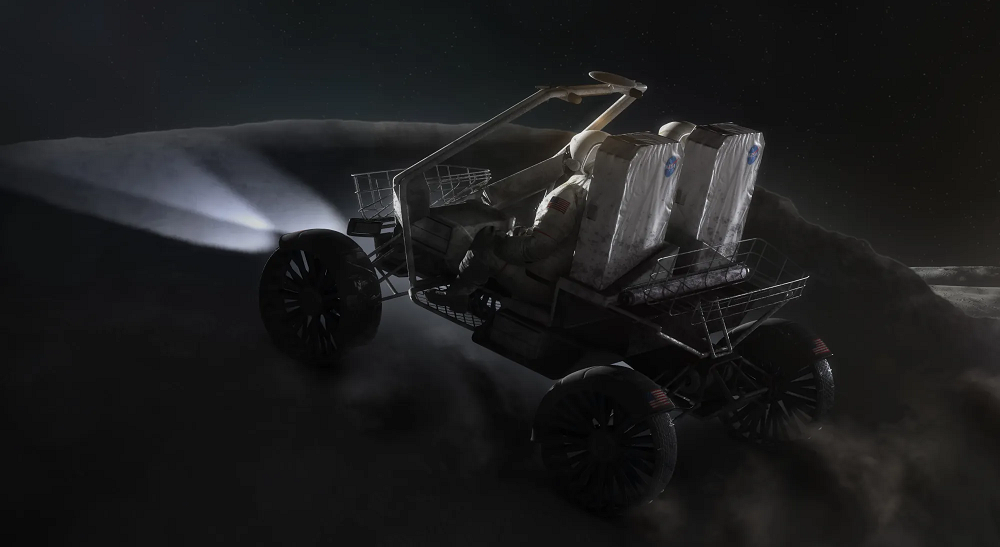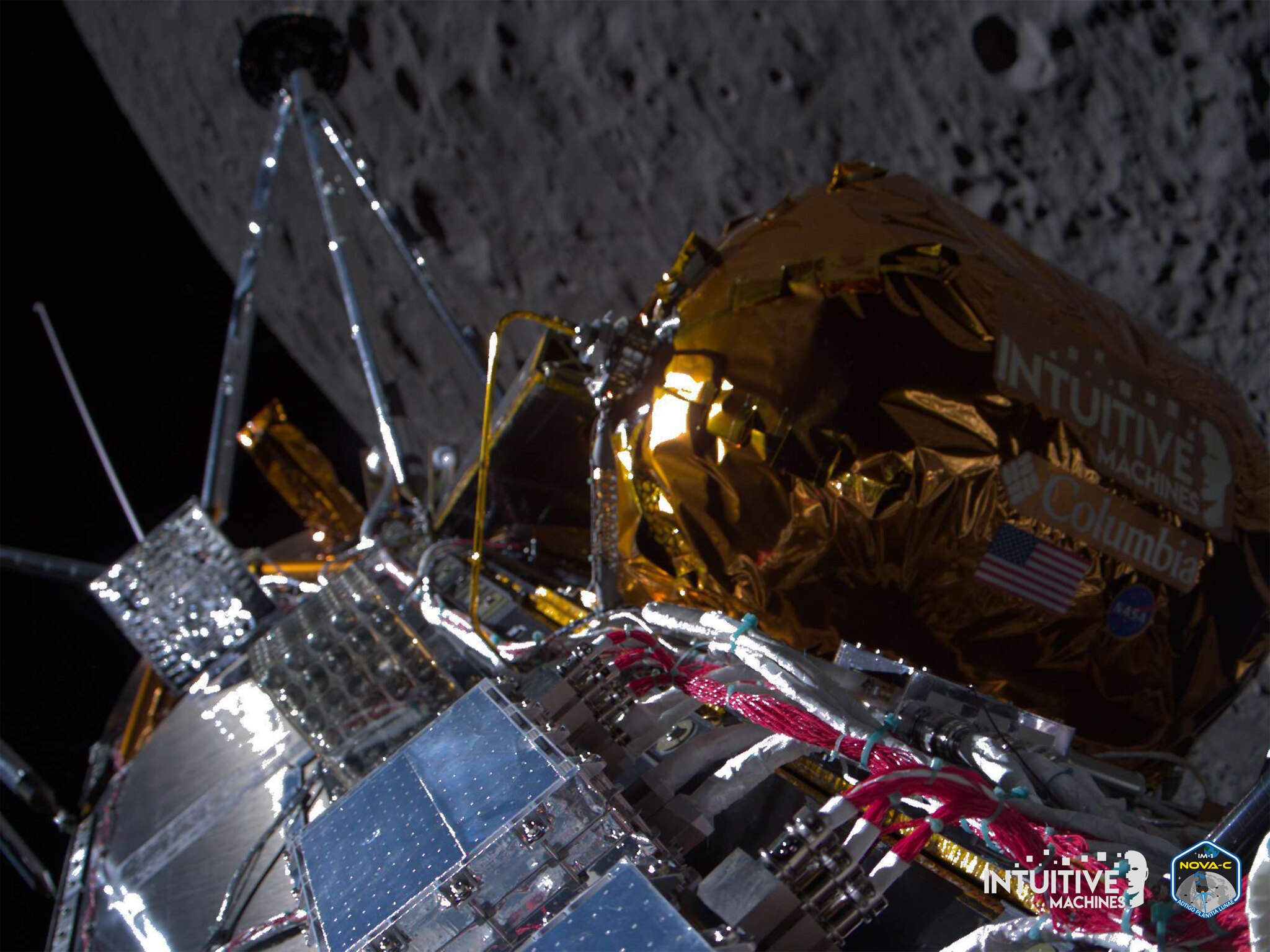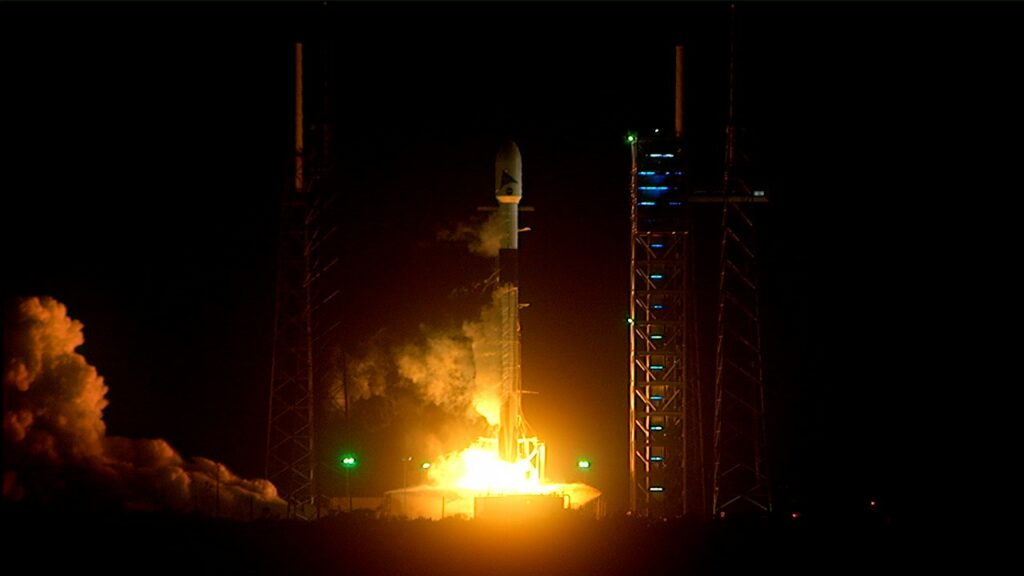NASA’s Artemis Plans Call for $8.1 billion in 2024
 NASA’s Space Launch System rocket carrying the Orion spacecraft launches on the Artemis I flight test, Wednesday, Nov. 16, 2022, from Launch Complex 39B at NASA’s Kennedy Space Center in Florida. NASA’s Artemis I mission is the first integrated flight test of the agency’s deep space exploration systems: the Orion spacecraft, Space Launch System (SLS) rocket, and ground systems. SLS and Orion launched at 1:47 a.m. EST, from Launch Pad 39B at the Kennedy Space Center. Photo Credit: (NASA/Bill Ingalls)
NASA’s Space Launch System rocket carrying the Orion spacecraft launches on the Artemis I flight test, Wednesday, Nov. 16, 2022, from Launch Complex 39B at NASA’s Kennedy Space Center in Florida. NASA’s Artemis I mission is the first integrated flight test of the agency’s deep space exploration systems: the Orion spacecraft, Space Launch System (SLS) rocket, and ground systems. SLS and Orion launched at 1:47 a.m. EST, from Launch Pad 39B at the Kennedy Space Center. Photo Credit: (NASA/Bill Ingalls)  NASA made headlines in April by naming the crew for the Artemis II lunar fly-by mission that’s expected to launch in late 2024. But even flying past the moon, much less landing, will require a Herculean effort on the ground and massive federal spending in the budget now under consideration by lawmakers.
NASA made headlines in April by naming the crew for the Artemis II lunar fly-by mission that’s expected to launch in late 2024. But even flying past the moon, much less landing, will require a Herculean effort on the ground and massive federal spending in the budget now under consideration by lawmakers.
The second Artemis flight builds on the successful 2022 test of an uncrewed Space Launch System rocket and uncrewed Orion capsule. Commanded by American astronaut Reid Wiseman, the crew of four includes Americans Victor Glover, the pilot, and Christina Hammock Koch, a mission specialist. Canadian Jeremy Hansen, a mission specialist, rounds out the crew, which is expected to demonstrate Orion’s readiness for missions to the lunar surface during a 10-day flight.
The Artemis Program, which has faced congressional scrutiny for years of delays and cost overruns, is slated to cost $8.1 billion for the fiscal year that begins Oct. 1, making it NASA’s single largest budget item, at nearly a third of the agency’s proposed $27.2 billion budget. The $8.1 billion, more than $300 million more than the 2023 budget approved by lawmakers in December, is the single largest annual investment in the program since it began as part of the agency’s Constellation program in 2005. Artemis is planned to return America to the Moon and put it on the path to Mars, but key elements remain under development, including its lunar lander and Gateway, a planned station in lunar orbit to support surface missions.
The announcement of the planned crew for Artemis II earned bipartisan cheers from congress, with Democrats and Republicans lauding the agency’s plan to return to the Moon.
“Artemis II will bring us one step closer to establishing a long-term human presence on the Moon and lay the groundwork for future human exploration of Mars,” stated Oklahoma Republican U.S. Rep. Frank Lucas, chairman of the House Science, Space and Technology Committee. “Unleashing a new era of space exploration will not only take us to places we’ve never been before, but power scientific breakthroughs, drive technological innovation, and inspire the next generation of students and scientists to reach new heights.”
But praising the program’s ambitions will be easier than delivering the money Artemis will require. Since taking control of the House in November’s elections, Republicans have decried federal spending and called for cuts. Negotiations to avoid federal debt default have stalled in the House.
On the same day NASA announced the Artemis II crew, House Speaker Kevin McCarthy, a California Republican, criticized the Biden administration’s 2024 budget plans.
“Let’s get to work to limit spending, save taxpayer money, and grow the economy,’ McCarthy said on Twitter.
President Joe Biden and NASA Administrator Bill Nelson have pushed to boost spending on Artemis.
“At NASA, we support good-paying American jobs, stir imaginations, and excite the world to gaze up at the heavens and reflect on our place in the universe,” Nelson said in a statement cheering the White House’s proposed budget, which includes the boost for Artemis.
–Tom Roeder, troeder@spacefoundation.org




